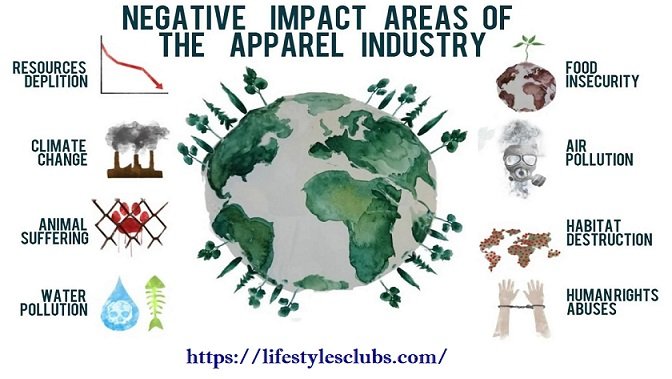Why Is Sustainable Fashion Important? A Comprehensive Guide to Eco-Friendly Clothing
In recent years, the fashion industry has come under scrutiny for its environmental and social impact. From excessive water usage to unethical labor practices, the traditional fashion model is unsustainable. This has led to the rise of sustainable fashion—a movement that prioritizes eco-friendly materials, ethical production, and long-lasting designs. But why is sustainable fashion important? In this article, we’ll explore the significance of sustainable fashion, its benefits, challenges, and how you can contribute to this growing movement.
1. What Is Sustainable Fashion?
Sustainable fashion refers to clothing, accessories, and footwear that are designed, manufactured, distributed, and used in ways that are environmentally friendly and socially responsible. It encompasses a wide range of practices, including:
- Using organic or recycled materials
- Reducing water and energy consumption
- Ensuring fair wages and safe working conditions for workers
- Promoting circular fashion (recycling, upcycling, and repairing)
The goal of sustainable fashion is to minimize the negative impact of the fashion industry on the planet and its inhabitants while creating high-quality, timeless pieces that last.
2. The Environmental Impact of Fast Fashion
Fast fashion—the rapid production of inexpensive clothing to meet the latest trends—has devastating consequences for the environment. Here are some alarming facts:
| Environmental Issue | Impact of Fast Fashion |
|---|---|
| Water Consumption | It takes 2,700 liters of water to produce one cotton t-shirt—enough for one person to drink for 2.5 years. |
| Pollution | The fashion industry contributes to 10% of global carbon emissions and 20% of wastewater. |
| Waste Generation | 85% of all textiles end up in landfills each year, contributing to microplastic pollution. |
| Deforestation | Viscose and rayon production contribute to the destruction of ancient and endangered forests. |
Sustainable fashion addresses these issues by promoting eco-friendly materials, reducing waste, and adopting cleaner production methods.
3. Social and Ethical Implications of Fashion
Beyond the environmental impact, the fashion industry is notorious for its unethical labor practices. Many fast fashion brands outsource production to developing countries where workers are paid meager wages and subjected to unsafe working conditions.
Sustainable fashion brands prioritize fair trade, safe working environments, and living wages for their workers. By supporting these brands, consumers can help combat exploitation and promote social justice.
4. Economic Benefits of Sustainable Fashion
While sustainable fashion may seem more expensive upfront, it offers long-term economic benefits:
- Cost-Effectiveness: High-quality, durable clothing lasts longer, reducing the need for frequent replacements.
- Job Creation: Sustainable fashion supports local artisans and small businesses, boosting local economies.
- Innovation: The demand for sustainable materials drives innovation in textile production, creating new business opportunities.
5. Key Principles of Sustainable Fashion
To truly embrace sustainable fashion, it’s essential to understand its core principles:
| Principle | Description |
|---|---|
| Eco-Friendly Materials | Use of organic cotton, hemp, bamboo, and recycled fabrics. |
| Ethical Production | Fair wages, safe working conditions, and no child labor. |
| Minimal Waste | Zero-waste patterns, upcycling, and recycling. |
| Transparency | Brands openly share their supply chain and production practices. |
| Timeless Design | Focus on classic, versatile styles that transcend trends. |
6. How to Identify Sustainable Fashion Brands
With so many brands claiming to be sustainable, it can be challenging to separate the genuine from the greenwashed. Here are some tips:
- Look for certifications like GOTS (Global Organic Textile Standard) or Fair Trade.
- Research the brand’s supply chain and labor practices.
- Check if they use eco-friendly materials and packaging.
- Read reviews and testimonials from other consumers.
7. Challenges in Adopting Sustainable Fashion
Despite its benefits, sustainable fashion faces several challenges:
- Higher Costs: Sustainable materials and ethical labor practices often result in higher prices.
- Limited Availability: Sustainable options may not be as widely available as fast fashion.
- Consumer Awareness: Many consumers are unaware of the impact of their fashion choices.
8. The Role of Consumers in Driving Change
As consumers, we have the power to drive change in the fashion industry. Here’s how:
- Buy Less, Choose Well: Invest in high-quality, timeless pieces.
- Support Sustainable Brands: Vote with your wallet by supporting ethical brands.
- Recycle and Upcycle: Donate, repair, or repurpose old clothing.
- Spread Awareness: Educate others about the importance of sustainable fashion.
9. Sustainable Fashion Trends to Watch
The sustainable fashions movement is constantly evolving. Here are some trends to keep an eye on:
- Circular Fashion: Brands are adopting circular models, where products are designed to be reused, recycled, or biodegraded.
- Rental Fashion: Clothing rental services are gaining popularity, reducing the need for new purchases.
- Digital Fashions: Virtual clothing and NFTs are emerging as sustainable alternatives to physical garments.
10. Frequently Asked Questions (FAQs)
Q1: Is sustainable fashions more expensive?
A: While sustainable fashions may have a higher upfront cost, it is often more cost-effective in the long run due to its durability and quality.
Q2: Can sustainable fashions really make a difference?
A: Yes! By supporting sustainable fashions, you can reduce your environmental footprint and promote ethical practices in the industry.
Q3: How can I start transitioning to sustainable fashions?
A: Start by assessing your current wardrobe, investing in sustainable pieces, and supporting ethical brands.
11. Conclusion
Sustainable fashion’s is not just a trend—it’s a necessity. By choosing eco-friendly and ethical clothing, we can protect the planet, support fair labor practices, and promote a more sustainable future. While challenges remain, the growing awareness and demand for sustainable fashion’s are driving positive change in the industry.
As consumers, we have the power to make a difference. Let’s embrace sustainable fashion’s and inspire others to do the same. Together, we can create a world where fashions is not only stylish but also sustainable.
Read More Also : Unique Fashion Earrings: The Ultimate Guide to Style, Trends, and Buying Tips
